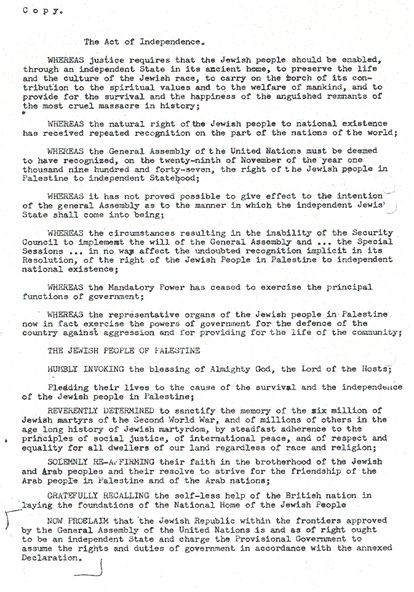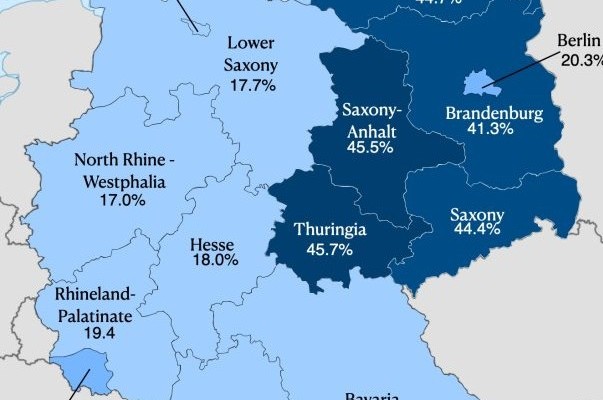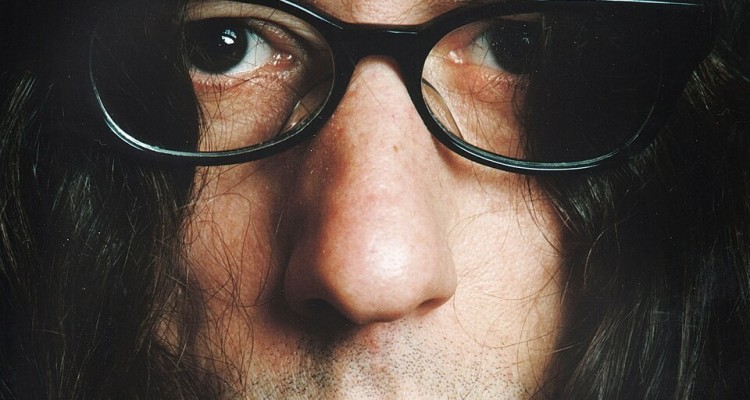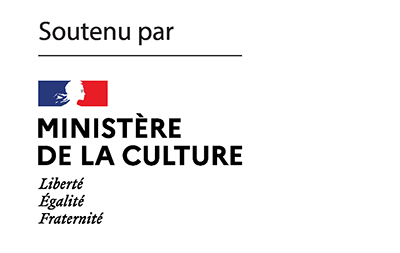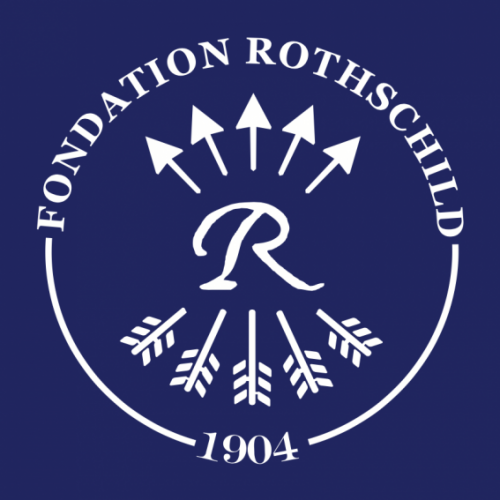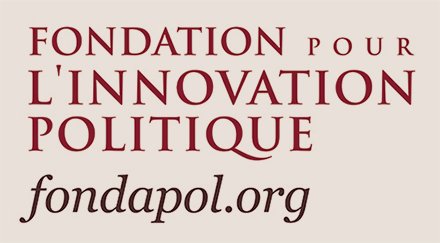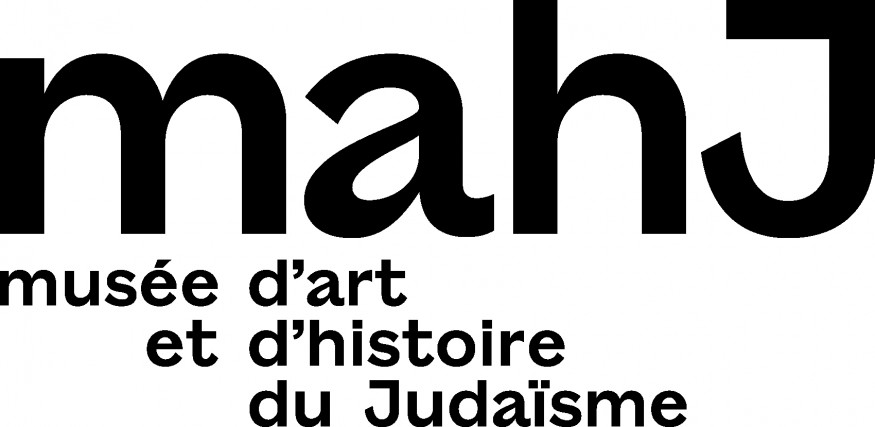After reading Philippe Sands’ essay East West Street[1], Danny Trom returned to the Galician town, once Polish and now Ukrainian, to follow in his family’s footsteps. The footsteps of Lemkin and Lauterpacht, the two heroes of Sands’ best-seller, overlap with those of Trom’s grandfather. Lemberg was a land of crime and the epicenter of emerging international criminal law, but also a place where Zionism was dreamed up in Yiddish. Why does Sands occlude this fact? Now war is raging in Ukraine – and thus in Lviv, formerly Lemberg. In what way and how does the tragic situation in the Ukraine involve the Jews? Ukraine addresses this question to both the Jews and the State of Israel. Danny Trom, to resolve this matter, revisits his story with an epilogue, from which he draws a common position for both Europe and the Jews.

Philippe Sands’ East West Street is an international bestseller. The narrative intermingles the personal history of the author – arising from the interest that each of us appears to have for his heritage – and the world history that belongs to us all. These two dimensions intersect at a place called Lemberg, Lviv’s German place-name. The author, whose family hails from the outskirts of this town, now located in Ukraine, works today as a professor of international law in London and attorney in the international courts. Having been invited to the law school of this former capital of Galicia, a province of the Austro-Hungarian Empire before World War I, Sands resolved to rediscover the threads of a surprising, even gripping tale. The opus resembles a collage, the venerable art form of central Europe’s avant-garde of yesteryear.
Lemberg as Metaphor
Here are the pieces of Sands’ composition. Hans Frank, who started out as a legal scholar and became first a legal counselor to Hitler and then military governor of conquered Poland, and thus an organizer of the extermination of Jews in Galicia, once delivered a lecture at the Lemberg law school – in the same room as Sands, as the author will learn. And the domain which animates Sands’ professional activity, international criminal law, was practically created by two Jewish graduates of the school. The first, Raphael Lemkin, originated the idea of the crime of genocide. The second, Hersch Lauterpacht, promoted the notion of the crime against humanity, which placed states in the dock for crimes, even those committed against their own citizens. The worst had its two cents at the Lemberg school, but also the forces that tried to overcome it.
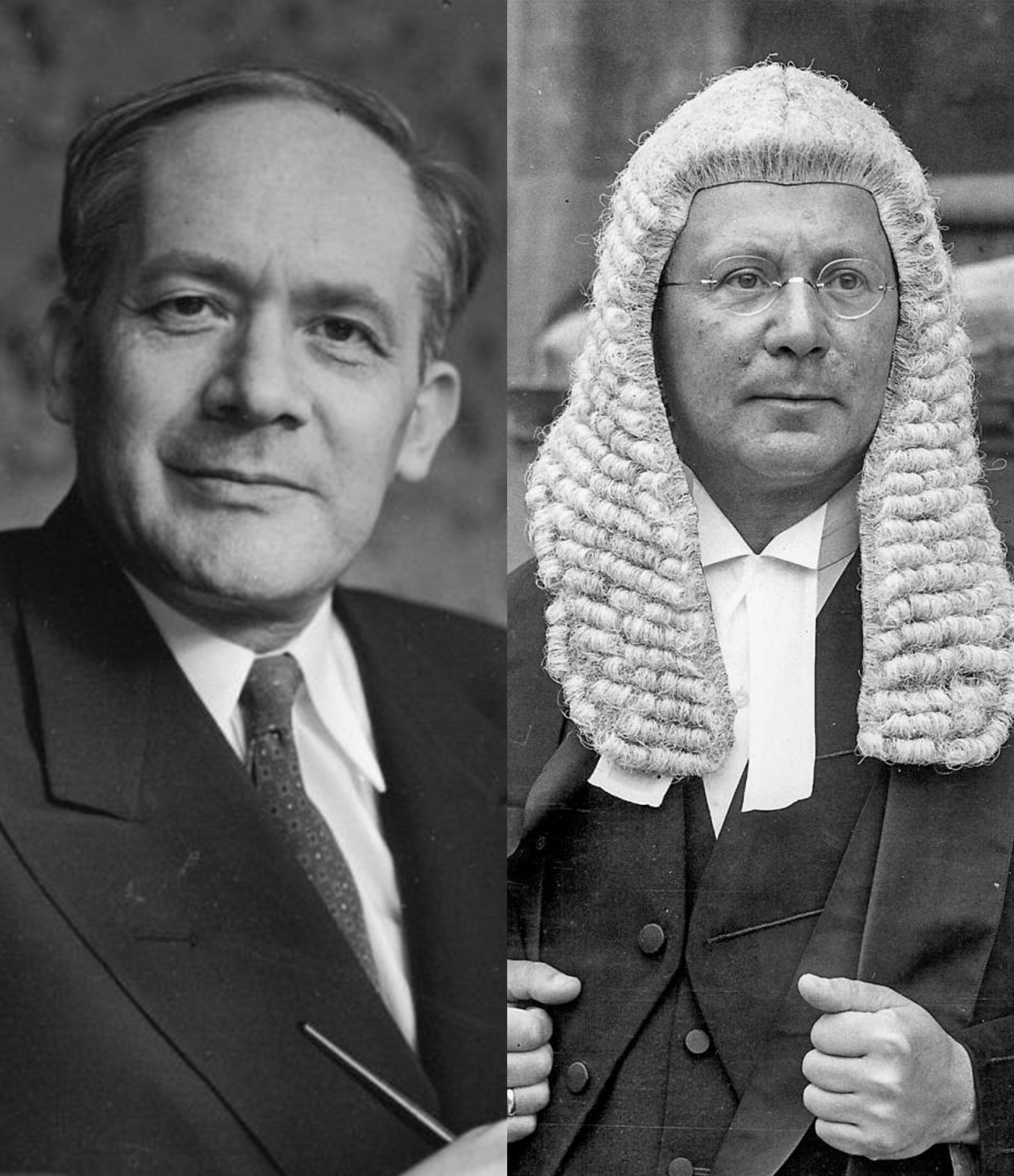
The potency of Sands’ work derives from this knot. Lemberg comes into focus as a metaphor: the variety of prewar Europe, then the extermination of the Jews in their population centers. Lemberg also evokes the Nuremberg Trials, where for the first time the legal classifications of genocide and crimes against humanity were put to use. Lauterpacht indulges some irony on Lemkin’s legal construction, the use of which is extended from Nuremberg to the world, with the adoption in 1948 of the international Convention on the Punishment and Prevention of the Crime of Genocide. The Nuremberg court sentenced Hans Frank to death, and this was the best punishment it could mete out, the fate generally reserved to serial killers. The series of victims is innumerable, but the list of the perpetrators itself is still too long for the verdict to be satisfying. Lemberg functions as a microcosm of our present condition: European humanity can now be accused of a crime against itself. Starting from this place, modern international criminal law was elaborated, and every legal practitioner in this field (including Sands) owes his whole discipline to this school.
East West Street is thus a return to the author’s origins, familial, professional, credal. Lemberg fascinates Sands, which becomes ever-more apparent when Sands comments on his work. Is the town as it exists today, emptied of its Germanophone bourgeoisie, of the Jews and Poles who once lived there, repopulated by Ukrainians after the war, what fascinates him? Or rather is it the metaphor of a Central Europe once upon a time creative and vibrant, whose abrupt end signals the end of a contented European humanity and the advent of a Europe ready to conceive of political massacres as criminal acts? We cannot answer the question, and neither perhaps can Sands. He nonetheless advises readers to head to Lemberg for themselves, to see the town on their own. And I did that.
Return to Sanok
No matter that these vague travel plans preceded an actual reading of East West Street: the reading of Sands’ compelling account necessitated the trip. I followed the current without resisting, much like dolphins, which absent cooperation or foreknowledge, throw themselves into the waters of the Gulf Stream and head all in the same direction. But what direction? The meaning of this enterprise depends entirely on the destination. Sands chose Lemberg (at least in the French version of the work, which is titled “Retour à Lemberg”) as his. Not Lviv, the present name of the city (Ukrainian), nor Lwow (Polish), nor Lvouv (Yiddish) [note: “ou” pronounced like “oo”]. There are many possible destinations.

I could not in good conscience describe my destination as Galicia, a name that refers to the Austro-Hungarian Empire of which Galicia was a province and Lemberg the provincial capital. The oft-monumental, always-elegant architecture of the city does give Lviv the accents of the former Lemberg. From the patio of a cafe chosen at random in the old city, the resemblance is inescapable: the surroundings conjure Robert Musil’s Kakanie (the Austrian author’s moniker for Austria-Hungary). However, save for the few Polish and Russian visitors, the inhabitants speak almost exclusively Ukrainian.
The visit in truth turns on another axis, a small town along the road from Krakow to Lemberg, Sanok. This is not a preferred stop of tourist guides, but rather the hometown of my grandfather, whose surname I bear. Now situated on the Polish side of the border, looking out on the Carpathians and further to Slovakia from the southern exposure, this small city, nestled at the crossing of three borders, lies somnolent on the banks of the San River, itself the short-lived border between Nazi Germany and the Soviet Union, as fixed in the Molotov-Ribbentrop Pact.
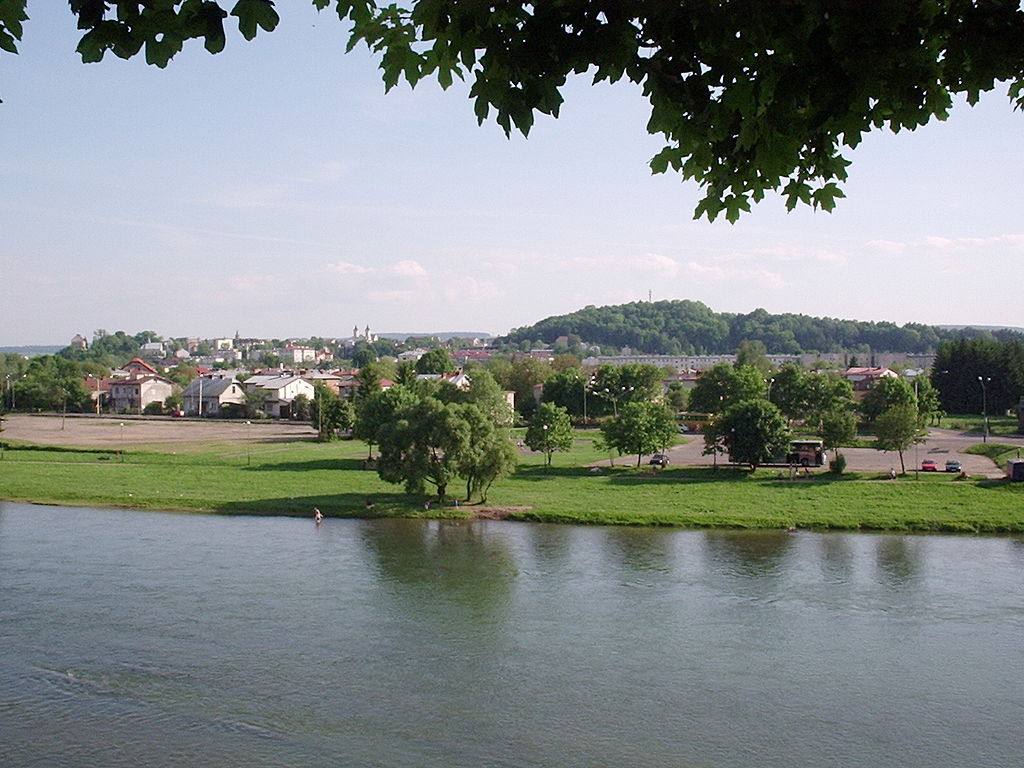
Jews running from the German advance into Poland traversed the river to reach the Soviet zone, sometimes prolonging the journey until Lemberg, 100 kilometers from the erstwhile border. Some were slaughtered during the crossing, some drowned. One had to continue eastward, far past the border and Lemberg, were one to survive the further advance of the Germans, who rolled into the Soviet Union as part of Operation Barbarossa. I lose trace of two family members in the Lemberg Ghetto.
Sanok, now entirely Polish, pays little mind to the border and turns toward Krakow. Lviv now hardly counts, even though Sanok sits closer to Lviv than to Krakow, and though the small city once oriented itself more eastward than westward.

The name of this city, which counted 12,000 inhabitants (5,000 Jews) on the eve of the Second World War, changes in function of one’s interlocutors: Sanök in Pölish and Ukrainian, Saanig for the Austro-Hungarian administration, Sounik in Yiddish. Nothing special there. Vilnius, the great Lithuanian Jewish metropolis, too, had many names: Wilno in Polish, Vilna in Russian and Yiddish. Sanok, Lemberg, Vilnius, these cities and their names were swept along in the capricious tides of Central Europe’s geopolitics. Vilnius, in order to acquire the exclusive Lithuanian name of today, had to pass through a gradual process of homogenization, Jews exterminated, Poles and Ukrainians expelled, and after the fall of the Soviet Union the departure of Russians. Sanok, compared to the great cities of Lemberg and Vilnius, was equally an ethnic patchwork, but neither contains anything of interest nor pretends to do so.

Sanok, similar to Lemberg and the insular cities and towns of Galicia, was 30 to 40 percent Jewish. While traditional religion, including the various Hasidic permutations, predominated, the city’s Jewish population also boasted a bourgeois merchant class and a stratum of cultured men and women. Here, as in Lemberg, traditional Judaism had to contend with the upstarts of religious modernization, which penetrated to far-flung villages. Emancipation in Western Europe rendered alluring the sirens of political revolution, which appeared under the appellations of the sundry forms of Zionism and socialism. These new ideas, at once intertwined and contradictory, battled for the allegiance of the masses.

The fate of the Jews of Sanok was similar to that of the Jews of Lemberg, and a few months elapsed between one catastrophe and the next. The burning of synagogues on the morrow of German troops’ arrival, to leave no doubt about what was in the offing. Mass executions, often of women, children and the elderly. The forced labor of men until collapse. The concentration and imprisonment of the sector’s Jews in urban ghettos already starving and overcrowded. The deportation to and extermination of Jews at Sobibor, and, in case of too much traffic, elsewhere.
The reading of the memory-book (Yiskerbuch) compiled by the former Jewish residents of Sanok in 1970, it appears that 30 family members who had remained were murdered. Jews who fled far eastward were the ones to survive.
He was barely an adult, but my grandfather had been pulled into the political maelstrom of the Jewish world of his childhood. He broke definitively with the Belz Hasidic community of his family, and converted to socialist Zionism, immigrating in 1926 to Palestine. He referred to Sanok as Sounik and Lemberg as Lvouv. He was stirred to Zionist commitment by the apparent sterility of traditional life, which remained inert amid the manifold dangers of the time and region. This was common enough: Raphael Lemkin and Hersch Lauterpacht, Sands’ international criminal law heroes, started out as Zionist activists in their youth.

Lauterpacht began with high hopes: the centrality of the German-language university center that was Lemberg, which suddenly became the Polish university of Lwow with the advent in 1918 of Poland’s Second Republic, held out for him the prospect of upward mobility and cosmopolitanism. But the horizon darkened, as Polish nationalists accused Jews of collaboration with Ukrainians and fomented pogroms. The University of Lwow was only a stop-over for Lemkin, since he started his studies in Warsaw, where he served as a prosecutor and then a high-ranking civil servant in the Polish Ministry of Justice. Zionism proved interesting for these strivers, but they left to pursue their careers: Lauterpacht to Vienna and then Cambridge, and Lemkin to Warsaw and then the United States. The modest men and women of the provinces found a practical solution in Zionism, the means to escape a spiritual and political crisis more acute than ever.
The Language of Combat
There is apparently no point at which my grandfather crossed paths with Lemkin or Lauterpacht. No colorful vignette to enliven this account. Trom grand-père failed to carve out a place for himself in a Palestine then bedeviled by economic trouble. He decided after a few months to make for Antwerp, in Belgium, where there was reputed to be abundant work, a port city from which one could sail for America. He remained in Antwerp.
Antwerp is sometimes now dubbed Jerusalem on the Escaut, due to its concentration of Hasidic communities (there are Jerusalems everywhere; much like Venice, no one has a copyright on the term). Antwerp preserved in miniature the divisions of the pre-war Eastern European Jewish habitus. My grandfather found there the vestiges of the Hasidim of Belz, but maintained a wide berth, remaining true to his Zionist convictions and professing an admiration for Ben-Gurion.
He was more significantly a devotee of Yiddish culture, a commitment that blossomed in the post-war era, after having returned from southwest France, where he and his family hid out for five long years (those who remained in Antwerp were deported). He was an enthusiast of the Di goldene keyt (Chain of Gold) review, published in Tel Aviv from 1949 to 1995. He used to invite Yiddish writers, such as Avrom Sutzkever, to Antwerp, where Yiddish remained a vernacular tongue, even as elsewhere it was moribund. Pace the partisans of the Bund, one could be faithful to both Zionism and the Yiddish language.

Sutzkever was a young poet and member of the avant-garde Young Vilna group during the thirties. He enlisted in the ghetto resistance when German troops arrived, and managed to save libraries and archives of this “Jerusalem of Lithuania” via subterfuge. The situation quickly became dire, with the SS murder of 70,000 Jews at Ponary in July-August 1941, in Einstazkommando B9’s first “action” in the environs. He ranged himself under the command of the Hebraizing fellow poet Abba Kovner, head of the Jewish partisans. Kovner, chief of Vilna’s Socialist-Zionist Young Guard, led the partisans in the ghetto and then in the forests of Lithuania, coordinating resistance activities till the end.
The first Soviet tanks pushed into the empty Vilna ghetto at the same time as the Jewish partisans in July 1944. The commanding Soviet officer and the partisans exchanged in Yiddish, stunning Red Army press correspondent Ilya Ehrenbourg. The newspaperman and author, then at the pinnacle of his career, immortalized the episode in a profile of Sutzkever, published in the 29 April 1944 edition of Pravda, under the title “Triumph of a Man.“ He accompanied Sutzkever to Moscow, the pair boarding a plane together. He testified before the Jewish Anti-Fascist Committee (to be liquidated by Stalin in 1947) on the extermination of the Jews of Lithuania. His account was immediately registered in the Black Book of Russian Jewry then being planned by Ehrenbourg and Vasily Grossman. The work, ready for publication in 1947, would be banned by the Kremlin as a product of “rootless cosmopolitanism.”
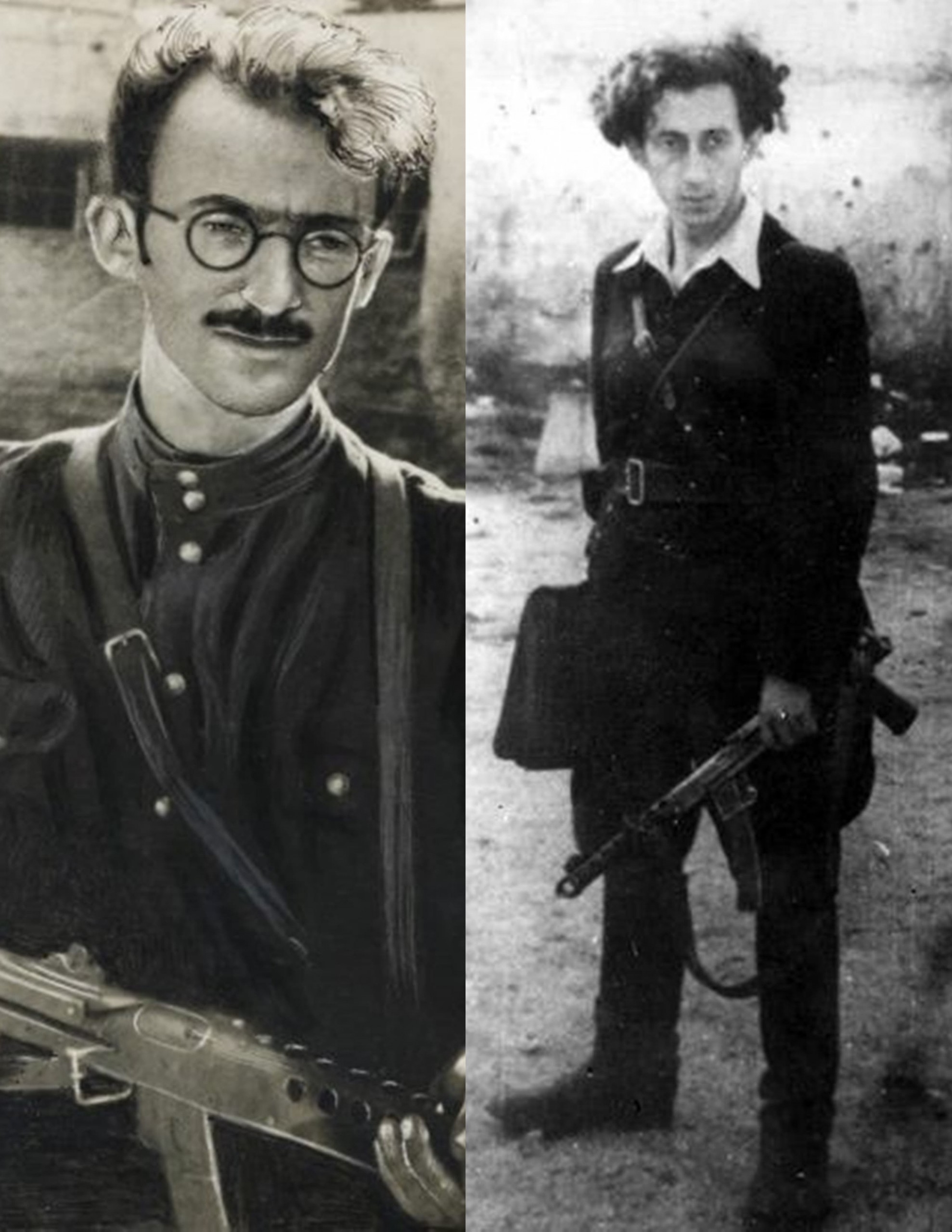
Sutzkever was also called as a witness at the Nuremberg Trials in February 1946. Here, his trajectory and that of Lemkin and Lauterpacht intersect. He related in a monotone voice, in front of U.S. Supreme Court Justice Robert Jackson, who served as the head of the American delegation at Nuremberg, as well as Hans Frank, seated in the defendants’ dock, the atrocities he saw. Atrocities that the two Jewish scholars educated at Lwow would place under the new penal rubrics of crimes against humanity and genocide, on which the legitimacy of the Nuremberg Trials rested. This point of contact was also the moment of a slight: Sutzkever, a polyglot, was denied the right to give testimony in Yiddish, the language of his murdered people. He ultimately had to settle for one of the victors’ languages, answering in Russian.
No doubt the Jews were the vanquished of the war, despite Abba Kovner, despite their resistance, despite the victory of the Allies. Nuremberg could not settle accounts. While Sutzkever testified, his friend Kovner, at the head of a handful of partisans called Nekame (“Vengeance” in Yiddish), strove to poison wells on German soil, in order to kill Germans, officers ideally, but any German would suffice. The Zionist leaders in Palestine disapproved of this operation. Had this endeavor (already begun) been carried to term, the resulting massacre would probably have fallen under the new legal categories created by Lemkin and Lauterpach. The convergences would have then shaded into the ironic.
Sutzkever was a Yiddish poet, Kovner a Hebraizing one; both friends were Zionists. Kovner had always been, by conviction. He remained behind in Vilna to fight on the European front, while he planned his emigration. Moving to a kibbutz in Palestine, after the Nazi defeat, he commanded a unit of the Haganah (and then the Israel Defense Forces) in the Jewish state’s War of Independence. Sutzkever became a Zionist under the weight of events, out of realism. The term “Haganah,” the name of the socialist militia in Palestine, was a loan to Hebrew from Yiddish, meaning “defense.”
Sutzkever moved to Mandatory Palestine in 1946, and became a citizen of a state that actively promoted the abandonment of Yiddish, scorned as a language of humiliating exile, now to be cast aside in favor of a regenerated Hebrew. But the exilic culture attempted to preserve itself, even within a framework meant to abolish it. Much like my grandfather, Sutzkever was caught between two fronts, two worlds.
I still have a few volumes of Di goldene keyt culled from the library of my grandfather. Sutzkever’s fame endured in Israel. His oeuvre was a weed, impervious to extirpation, persisting in the well-irrigated field of Israeli literature. But one had to translate him into Hebrew so that his work could be widely read. By the time a first French-language collection was brought out in 1988, under the title “Où gîtent les étoiles” (Where the Stars Stay”), my grandfather was long dead. I showed the volume to my grandmother, who responded, incredulous: “Sutzkever? That schnorrer? Translated in French?” She was a native German speaker, coming to Antwerp from Bardejow (Batstad for Austria-Hungarian nostalgists), a small bourgeois city in Slovakia not so far from Sanok in Galicia. She nonetheless held Yiddish in low esteem. Ditto for the arts patronage of her husband. She claimed to have learned Yiddish only in Antwerp, out of necessity.

Lauterpacht, Lemkin, my grandfather and the Jews of the region were Yiddish speakers who mastered the various languages of the region, at least the dominant ones. They all became Polish citizens in 1918 with the rebirth of Poland, whether they lived in Lwow like Lauterpacht, in Wolkowysk in Belarus like Lemkin, or in Sanok like my grandfather. Following the movement of history, leaving Lvouv for Lemberg, Sounik for elsewhere, presupposed abandoning Yiddish, no matter the destination, including Palestine. In the wake of the Holocaust, with the notable exception of Isaac Bashevis Singer, who wisecracked that he was writing for an audience that would return with the coming of the Messiah, those committed to holding on to Yiddish, like Sutzkever, labored in obscurity.
Cosmopolitanism and Zionism
The whole range of modern Jewish life nonetheless was expressed in this language. Lemkin himself militated for political Zionism in twenties Warsaw, writing essays in Yiddish whose message was very direct. He remains rather taciturn in his memoirs on this period, and so too is Sands, despite his status as master of the search for past lives. But the Zionist writings of Lemkin are essential for understanding his notion of the crime of genocide: a Yiddish volk exists, he asserts in Yiddish, and whatever the ambiguities of this identity, the group must attain self-consciousness and organize itself politically, working for the acquisition of Jewish sovereignty in Palestine. The collective is more than the sum of its parts, the individuals who compose it. The collective constitutes a sort of nation, and the law must accord this collective juridical recognition in order to remain in concert with the times. Lemkin could then conceive of genocide as not only the murder of many individuals, each full in individuality, but also as members of a collective: from the moment the collective is targeted as such, the collective is also attacked.
Sands casts the veil of charity on this sustained engagement of Lemkin. No matter: he evinces greater feeling for the other master of the work, Hersch Lauterpacht. The constitutional law professor spotted Lauterpacht when he showed up at the university in Vienna. Kelsen’s epistemology reaffirmed the student’s own juridical individualism. States, as sovereign collectives, are fictions that one should deconstruct. The legal order of the individual is what remains. Here is what resounded favorably in the ears of Lauterpacht. Lauterpacht’s Zionism was predictably less marked than Lemkin’s. He attended in his time at Lemberg the lectures of Martin Buber, who no doubt believed in a Yiddish volk but was hostile to the notion of sovereignty. Buber’s doctrine, shorn of nationalist potential, posited that the Jewish people would achieve political maturity in Palestine, but would forgo a state. One can imagine this anarchist predilection infused the spirit of Lauterpacht, who devoted his life to an international law framework constraining the state’s ability to impinge on the rights of individuals. Lauterpacht nonetheless continued his Zionist activities into his time in London.

Three million Galician Jews perished, of which 130,000 from Lemberg and 5,OOO from Sanok. There were few exceptions. But on this scale, even the exception assumes an important character. The founding of the state of Israel can be explained in major part in terms of the Jewish refugee crisis of the post-war, as Holocaust survivors wandered Europe in a daze. The Allies had no idea of what do with them, other than to stow them away in displaced persons’ camps, at a time when the British White Paper severely limited Jewish migration to Palestine. The creation of a Jewish state seemed like the most convenient solution. And in Palestine, the Yishuv was ready to transform itself into a state. The state of Israel was the fruit of generations of political labor on the part of Zionists, but in this time, the state was also a means to settle once and for all Europe’s Jewish problem.

The survivors had no interest in European humanitarianism or the rights of minorities. Like Kovner or Sutzkever, most wanted out of the continent. The Red Cross had visited the extermination camps and flagged nothing. The war had ruined what subsisted of an international legal order rigged up by the League of Nations. The first alarming reports of genocide to reach the world’s chancelleries were tucked away in bottom drawers. The Jews had been abandoned. Whether or not one had been a Zionist in the vanished world of the pre-war, the remnant of European Jewry considered sheltering itself under the protection of a sovereign Jewish state as the best option available.
The public face of the state of Israel was Ben Gurion. I still have a photo of my grandfather in conversation with Ben Gurion, visiting Antwerp at the beginning of the sixties. The socialism of the founders of the states, the ideal of the welfare state and kibbutz, both in the image of Israel’s Labor Party, met a warm reception. But the Soviet Union, which had adopted an anti-Zionist posture after momentary support for the nascent state, had persecuted Yiddish culture to the point of eradicating it in Eastern Europe. This left many Jews disillusioned; one could not ignore this. Partisans or not of world revolution (neither my grandfather nor Sutzkever, criticized in the thirties for skepticism, were), the term “Zionist” became an epithet rendering every Jew suspect. Ben Gurion, for my grandfather, was merely the man who had proclaimed the state of Israel, and then secured its recognition and survival. That was enough to confer on him immense prestige.

The Irresistible State
One understands easily why Lemkin and Lauterpacht remained silent on the occasion of this state’s appearance on the world stage. The two had remained on the European front, as advocates of an international legal framework of which Israel’s founding signaled the defeat. This condition was foundational in the life of Europe’s rump Jewry. The few in Europe were often hesitant, and stayed back on the continent, within reach of the new Jewish state. My grandfather appreciated Sutzkever, but he used a less-poetic Yiddish. “A good kick in the ass is more effective than all the beautiful speeches of Ben Gurion,” he said, summing up his own doctrine.
Israel’s Declaration of Independence was pronounced in a lyrical Hebrew. The speech, broadcast on the radio, was delivered by Ben Gurion in an overflowing room, before the national council of the Yishuv, called into session on May 13, 1948, when the British Mandate of Palestine expired. Lemkin appears to be the Sands hero more likely to appear in this episode, given the juridical ontology he had articulated and which had been informed by his activism. Mais voilà: Lauterpacht here figures in the drama.
We still do not know who had sought out Lauterpacht, then practicing law in New York. But Felix Rosenbluth, the official in charge of legal affairs for the Yishuv, found one day in Tel Aviv, inside a dossier Moshe Sharett had brought back from the United States, a proposed Declaration of Independence for Israel written by Professor Lauterpacht. The date set forth in the draft was almost exact, even though the state’s founders had not even started on the document they would actually enter into the historical record. Lauterpacht’s text was ultimately set aside, as the founders raced against the clock to agree on a text that the various Zionist factions could accept. The wrangling produced a text which had nothing to do with Lauterpacht’s proposal.
Lauterpacht proposed a declaration that was fully legal in character; he recommended that those who performed this ceremonial act do so under the rationale of effectuating the will of the international community to create a Jewish state. Ben Gurion, along with most of the founding fathers and mothers, believed that in building a state Jews had to assert their own will. Did not Zionism, in the fullness of definition, mean that a Jewish particularity acted of its own volition, without reference to outside authorities, neither God nor Caesar, nor the international law promoted by Lauterpacht? Here, on the eve of independence, we can discern a cleavage separating the prewar Jewish world.
Had Lauterpacht had been seized by an irresistible desire to contribute to the creation of a state for the Jews, such that he could not turn down the invitation to try his hand at a declaration. We cannot know, but clearly he wanted to act without repudiating his convictions. He wanted the state to enter the world as the child of international law and not as the fruit of the Jewish people’s toil. Lauterpacht threaded the needle in obligating Zionism to speak in the language of a cosmopolitan law; what an act of ventriloquism! But this birth certificate, in the minds of the founders, could not limit itself to a sterile legal recitation. One had to state the name of the state in endowing it with a genesis story, justifying its location, detailing the work that had gone into this event, expressing and stirring enthusiasm. Lauterpacht’s proposal was summarily rejected and forgotten.
Lauterpacht never mentioned this episode, nor for that matter did his biographers or Sands. The occurrence was nonetheless exhumed from the archives, leaving us to ponder this omission. The silence of the celebrated judge, the servant of Her Majesty, is easily understood. Demanding that he assume the contradictions of his ideas would be pedantic and perhaps insupportable. Did Sands identify with his hero so much that he maintained this silence? We can assume so, since Sands gives us no reason to suspect bad faith. This is where the problem might bubble up. Sands invited us to Lemberg. I went to Lvouv via Sounik.

We were not in the same place. We could not have seen the same thing. I became mired unbeknownst to me in the blindspot of East West Street. I saw there immediately the dreamlike connection between my grandfather and Sands’ heroes. I saw what was irresistible, even for Lauterpacht the cosmopolitan. This is something that lies outside the one created by Sands’ convergence, removed from the universities and courts and legal studies, very far from the Anglo-Saxon debates in which Sands is engaged about multiculturalism, which itself repurposes schema of British Empire functionaries. This is something located in the world of Lvouv and Sounik, the world of a people persecuted and then executed, whose few descendants seek out feverishly a path of exit, outside of Europe, outside of international law.
Post-Scriptum (March 15, 2022)
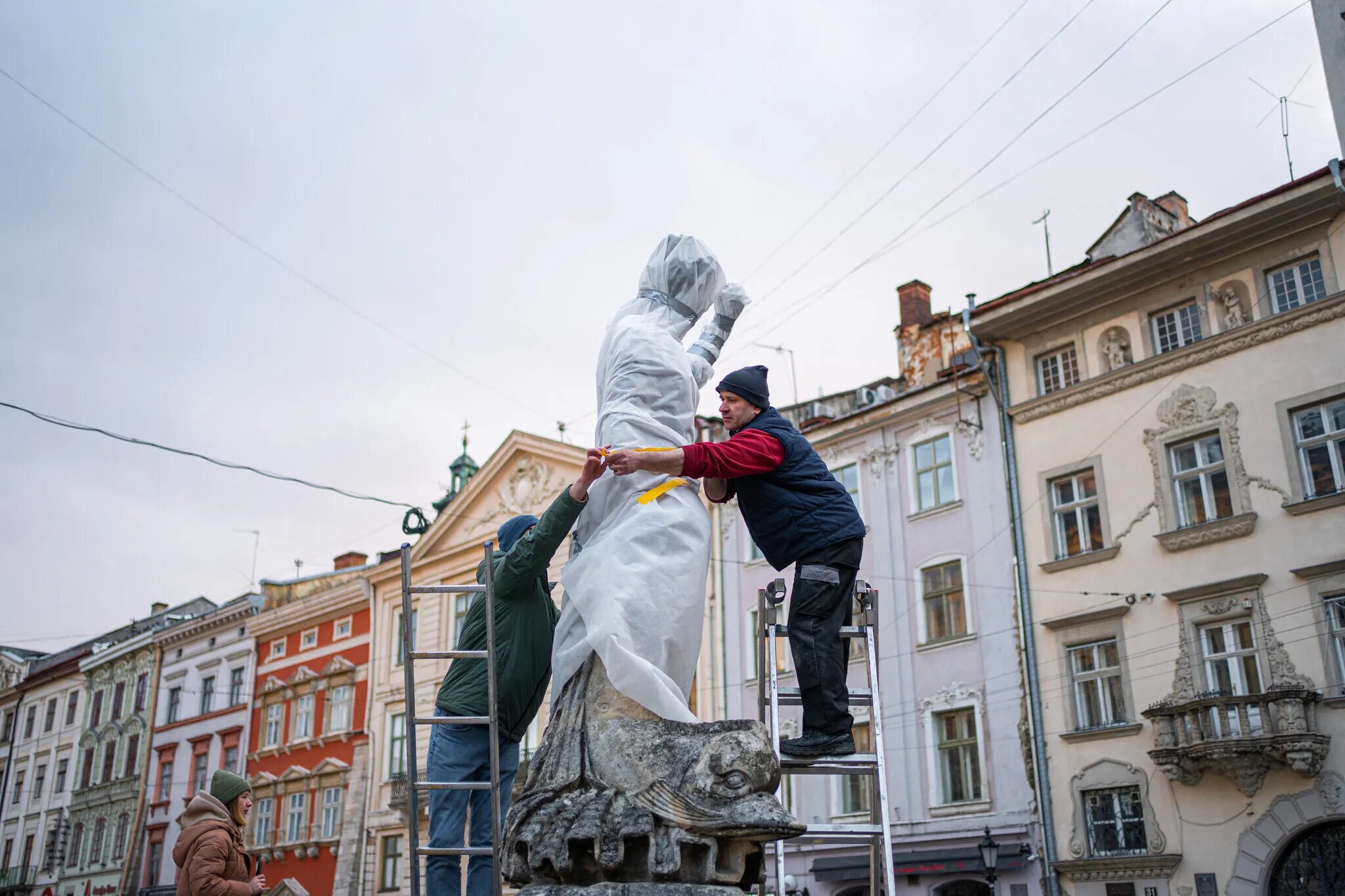
Danny Trom
Notes
| 1 | Philippe Sands, East West Street: On the Origins of Genocide and Crimes Against Humanity, Weidenfeld & Nicolson, 2016 |
